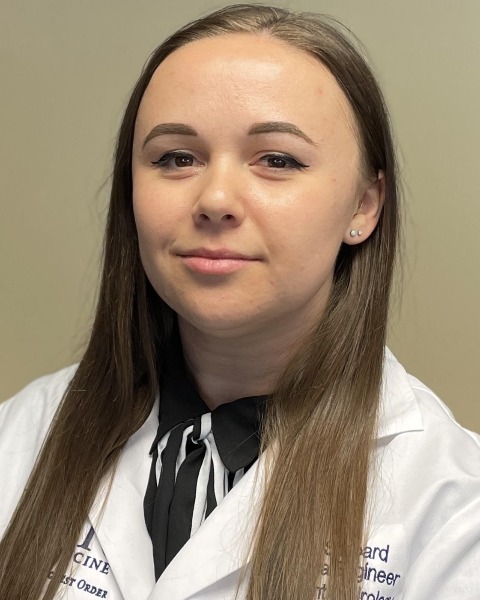Back
Introduction: Ultrasound-guided percutaneous nephrolithotomy (US-PCNL) is an effective and safe approach for management of large renal stones, yet adoption has been limited. The vast majority of US-PCNL are performed in the prone position vs supine position (80% vs 20%); however, there is a need for a safe, realistic procedural training platform for both approaches. We have previously demonstrated the ability of similar hydrogel simulations to improve operative outcomes during fluoroscopic PCNL training. Our objective was the development of a benchtop, non-biohazardous US-PCNL simulator using 3D printing and hydrogel molding and its validation using educational theory.
Methods: Consensus among 12 experts was reached regarding the essential aspects of an ideal US-PCNL model and an associated evaluation checklist using a Delphi consensus methodology. Segmentation software was used to generate a 3D model from an approved patient computed tomography (CT) scan, including kidney, pelvicalyceal system, stone, spine and ribs, abdominal wall, and iliac crest. Post-processing generated 3D printed casts into which hydrogel formulations replicating various anatomical and tissue mechanical properties of the structures were created according to the consensus statement. A prototype was fabricated for expert approval, after which 20 experts and 28 novices performed US-PCNL with performance assessed using the developed checklist.
Results: The simulator fulfilled all criteria established in the consensus statement, including external and ultrasound appearance mimicking in vivo appearance, a watertight pelvicalyceal system containing a functional stone that is distensible with retrograde instillation, and realistic tactile feedback during puncture. Experts agreed the simulator provides a safe training alternative (100%), bridges gaps between classroom and clinic (95.7%), and allows trainee performance evaluation (100%) in a risk free environment that can be modified for variable anatomy (88.9%). Highly significant differences were found between expert and novices using the checklist developed (93.4% vs 42.3%, P<0.001). In addition, novice performance improved with repeated practice (p <.001). A similar process was utilized to develop a supine version for US-PCNL simulation.
Conclusions: We have successfully developed and validated a high-fidelity benchtop simulator for both Prone and Supine US-PCNL that can be easily tailored to varying anatomy. Further studies evaluating the transfer of skill are still required. SOURCE OF
Funding: None
Video Abstract Session
Session: V02: Urolithiasis/Endourology
V02-07: Development and validation of a benchtop simulator for ultrasound guided percutaneous nephrolithotomy training using 3D printing and hydrogel molding.
Friday, April 28, 2023
10:30 AM – 10:40 AM CST
Location: Video Abstract Theater

Lauren Shepard, MS
Biomedical Engineer
University of Rochester Medical Center
Video Presenter(s)
Introduction: Ultrasound-guided percutaneous nephrolithotomy (US-PCNL) is an effective and safe approach for management of large renal stones, yet adoption has been limited. The vast majority of US-PCNL are performed in the prone position vs supine position (80% vs 20%); however, there is a need for a safe, realistic procedural training platform for both approaches. We have previously demonstrated the ability of similar hydrogel simulations to improve operative outcomes during fluoroscopic PCNL training. Our objective was the development of a benchtop, non-biohazardous US-PCNL simulator using 3D printing and hydrogel molding and its validation using educational theory.
Methods: Consensus among 12 experts was reached regarding the essential aspects of an ideal US-PCNL model and an associated evaluation checklist using a Delphi consensus methodology. Segmentation software was used to generate a 3D model from an approved patient computed tomography (CT) scan, including kidney, pelvicalyceal system, stone, spine and ribs, abdominal wall, and iliac crest. Post-processing generated 3D printed casts into which hydrogel formulations replicating various anatomical and tissue mechanical properties of the structures were created according to the consensus statement. A prototype was fabricated for expert approval, after which 20 experts and 28 novices performed US-PCNL with performance assessed using the developed checklist.
Results: The simulator fulfilled all criteria established in the consensus statement, including external and ultrasound appearance mimicking in vivo appearance, a watertight pelvicalyceal system containing a functional stone that is distensible with retrograde instillation, and realistic tactile feedback during puncture. Experts agreed the simulator provides a safe training alternative (100%), bridges gaps between classroom and clinic (95.7%), and allows trainee performance evaluation (100%) in a risk free environment that can be modified for variable anatomy (88.9%). Highly significant differences were found between expert and novices using the checklist developed (93.4% vs 42.3%, P<0.001). In addition, novice performance improved with repeated practice (p <.001). A similar process was utilized to develop a supine version for US-PCNL simulation.
Conclusions: We have successfully developed and validated a high-fidelity benchtop simulator for both Prone and Supine US-PCNL that can be easily tailored to varying anatomy. Further studies evaluating the transfer of skill are still required. SOURCE OF
Funding: None
